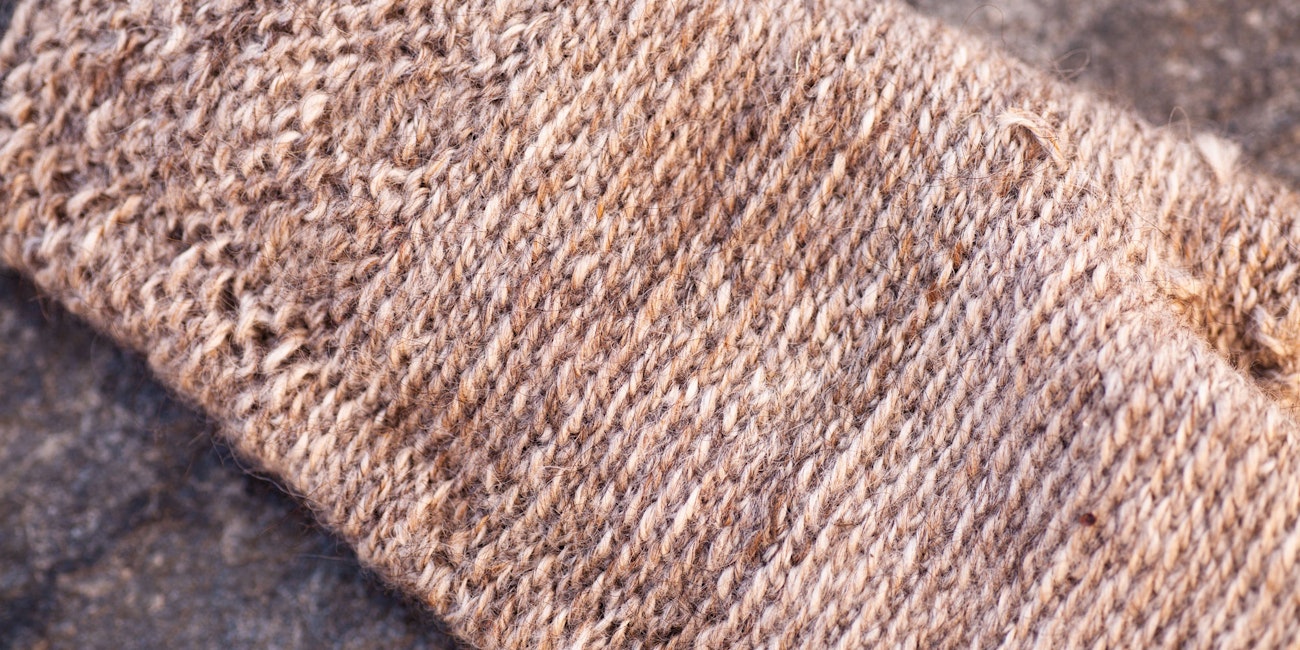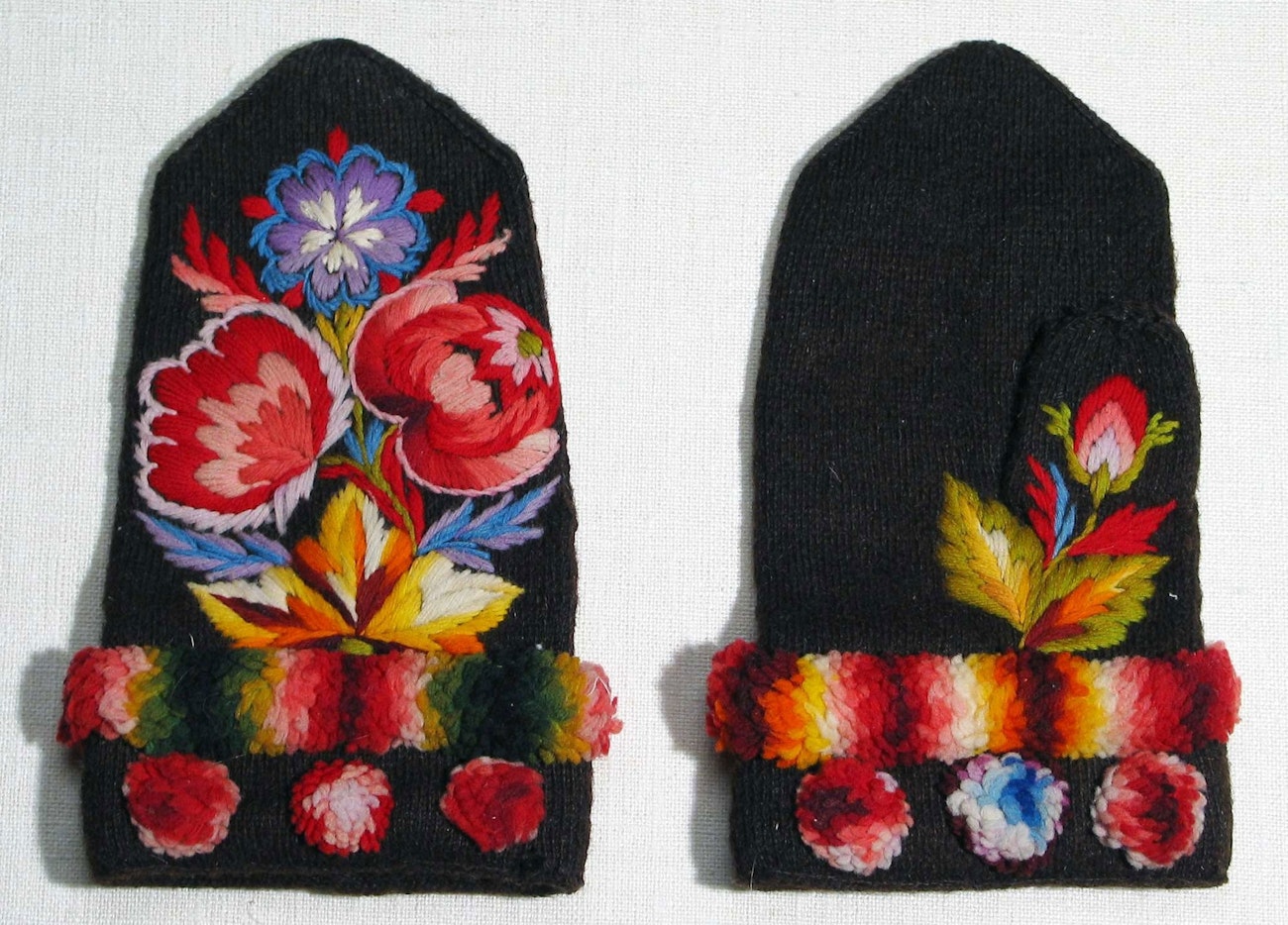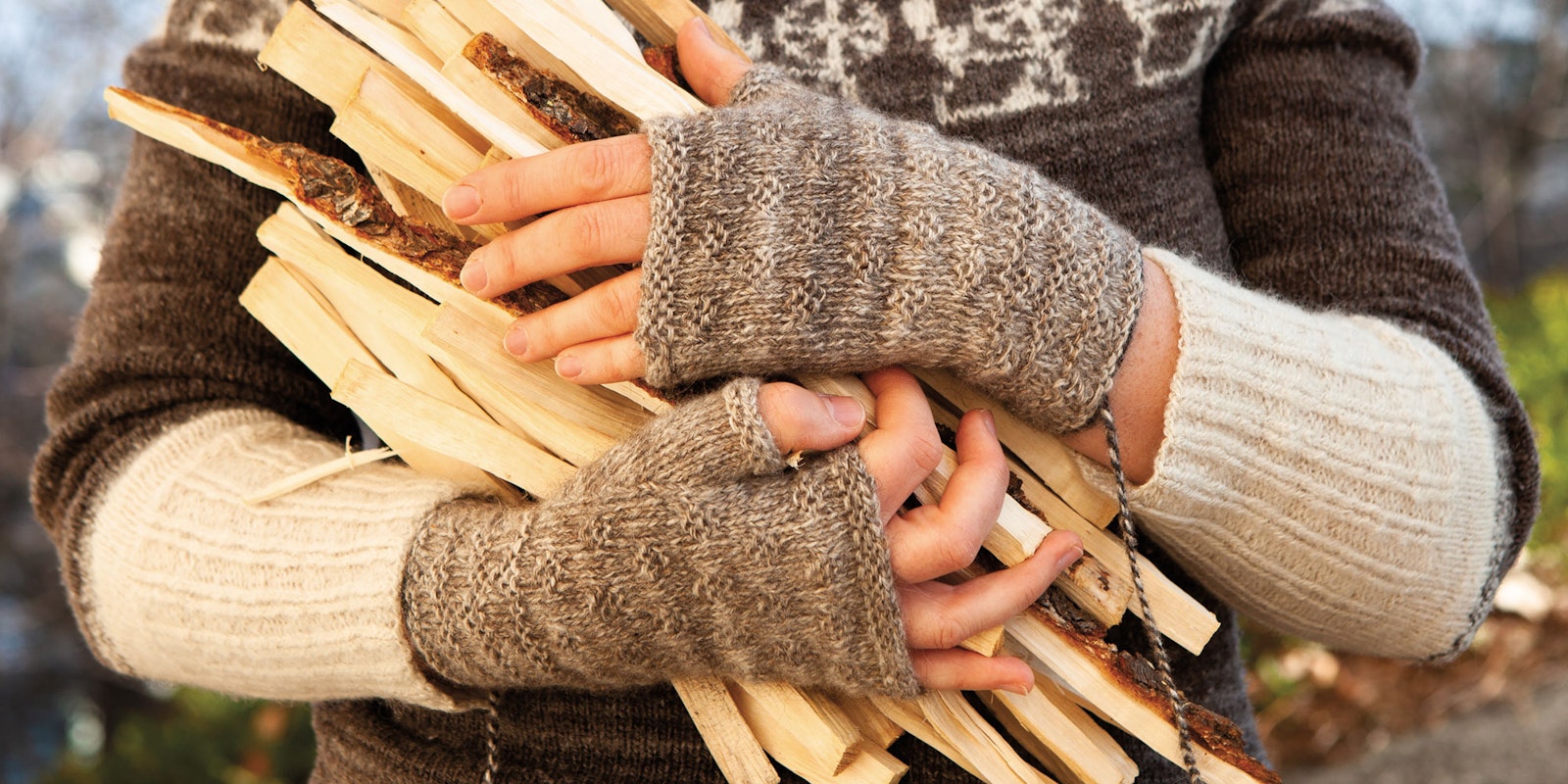In 1974, a mitten was found at an archaeological excavation in the Swedish county of Dalarna. The mitten looked knitted, but when turned inside out, it looked quite different from what we consider regular knitting today: distinctive horizontal ridges of twisted yarn covered the inside of the mitten. Analysis of the mitten revealed that it had been knitted with two separate yarns that were twisted between each stitch on the wrong side of the fabric. The yarn was spun S and plied Z, the opposite direction of most yarns in use today.
 The distinctive ridges on the inside of this mitten worked in two-end knitting result from alternating the two strands of yarn. Photo by Dan Waltin
The distinctive ridges on the inside of this mitten worked in two-end knitting result from alternating the two strands of yarn. Photo by Dan Waltin
When the mitten was rediscovered in Dalarna, researchers consulted elderly ladies from the area who remembered the technique. The technique we now know as two-end knitting, or tvåändsstickning in Swedish, had nearly been forgotten.
Research into the mitten’s past has continued. Anna-Karin Jobs Arnberg, curator at the museum of Dalarna, tells me that researchers first believed the mitten was from the nineteenth century. Later, the find was dated to the 1680s by analyzing soil layers. This updated timeframe makes the mitten one of the earliest finds of the two-end knitting technique and of knitting in general in Sweden. In 2017, the mitten was re-analyzed, this time with the carbon-14 dating method. The results showed that the mitten had been knitted between the mid-sixteenth and early seventeenth centuries.
Knitting: One End or Two?
When the two-end-knitting technique was used in Dalarna, it was simply called stickning (knitting). When what we call knitting today was later introduced to the area, it was called enkelstickning, one-end knitting. It was not until the one-ended, faster version took over in popularity that the names were switched: stickning for one end, tvåändsstickning for two ends. The technique is called tveband in Norwegian, two bands. When the first Swedish book on two-end knitting was translated into English, the translator chose to translate tvåändsstickning into twined knitting. This is the most common word for the technique in English. Sara Wolf argues in her book Knit (Spin) Sweden! that the term is misleading, since it refers to a technique where two ends are twisted around a third part, as in basket weaving. This is not how two-end knitting works. Therefore, just as Sara Wolf does, I prefer to use the more direct translation of tvåändsstickning: two-end knitting.
Two-end Textiles
Two-end knitting has a rich history in this area of Sweden and on the other side of the border in Norway, where it was used for sturdy work mittens with the two-end ridges on the outer sides of the mittens. Patterns, styles, and techniques varied between the villages in the county of Dalarna and, as with other crafting techniques, these hallmarks made it possible to determine the geographical origin of many two-end- knitted objects.
Styles varied for men’s and women’s everyday and church-day textiles. Even marital status impacted the specifics of style. Socks, gloves, mitts, and wristlets were common in addition to sleeves sewn onto woven wool jackets for both male and female wearers.

Hard-wearing two-end knitting was used for socks, gloves, and mitts, even this colorfully embellished pair. According The aniline color indicates that the gloves were made after 1860. Sorted as women’s gloves, but could possibly be men’s gloves given the size. NM.0053247B. Collection of the Nordic Museum/Nordiska museet. Photo by Elisabeth Eriksson/Nordiska Museet, used under license CC by 4.0
The history of two-end knitting indicates that women spun and created two-end-knitted garments to provide for their families. In the literature about the history of two-end knitting, I see a few pictures and images of women walking and knitting, as is common for other historical Scandinavian knitting traditions.
When I first came across two-end knitting, I read that it had almost been forgotten in an era of faster one-end knitting. I felt a responsibility to learn the technique to be part of saving it. Today it is one of my favorite knitting techniques, always using my handspun Z-plied yarn.
To learn more about two-end knitting and the yarns best suited for it, see “Strong and Sturdy: Two-end Knitting Condensed.”
To try your hand at two-end knitting, knit the Heartwarming Mitts.
Resources
Dandanell, Birgitta, Ulla Danielsson, and Kerstin Ankert (eds). Tvåändsstickat. Värnamo: Dalarnas Museum, 2013.
Farwell-Clay, Julia. “Spinning in the Best Direction for the Way You Knit.” Spin Off, Winter 2013, 30–32.
Gustafsson, Kerstin, and Alan Waller. Ull: Hemligheter, möjligheter, färdigheter. Helsingborg: LTs förlag, 1987.
Westman, Berit. Tvåändsstickning: Grunderna. [Insjön]: Sätergläntan, Hemslöjdens gård, 2004.
Wolf, Sara J., and Josefin Waltin. Knit (Spin) Sweden! Second edition. Aknitwizard, 2022.
Josefin Waltin is a knitter, weaver, and occasional dyer. She teaches spinning, both online and in person; publishes instructional and documentary-style videos; and maintains a blog from her home in Sweden.

